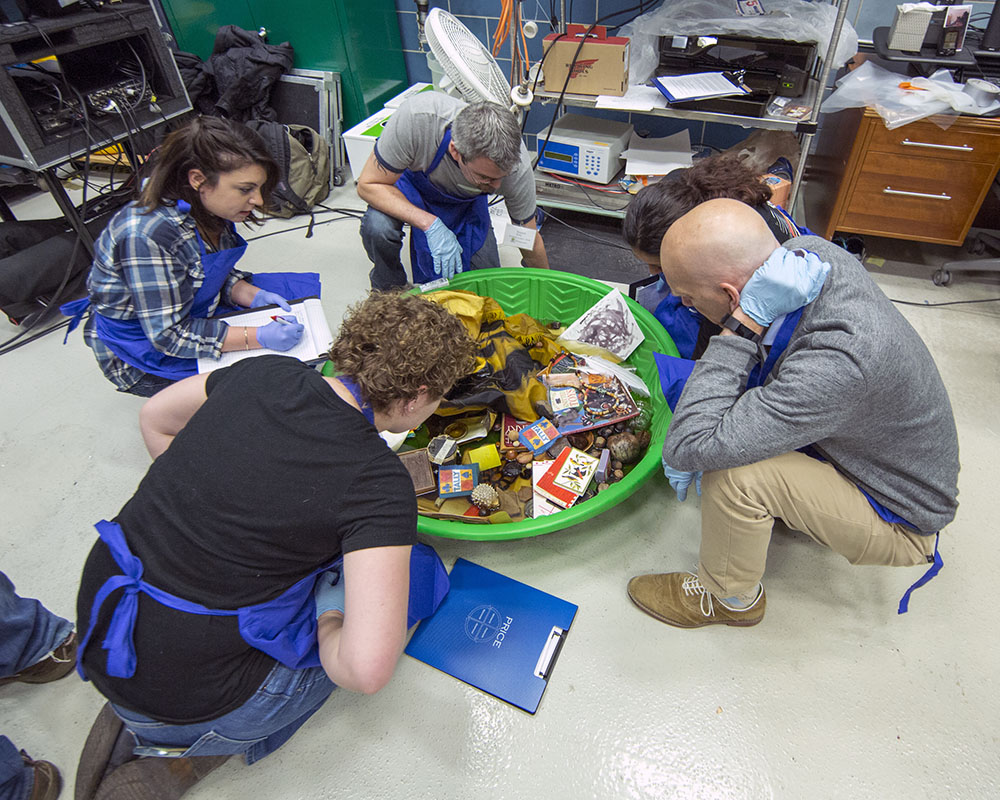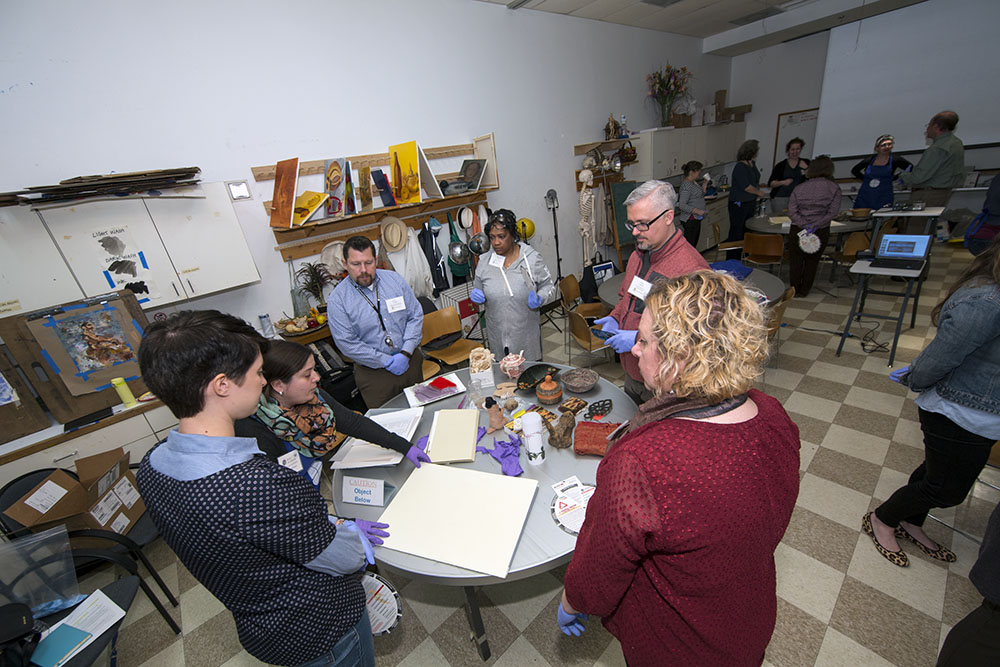The Archives actively promotes a safety culture for both staff and collections. A comprehensive emergency preparedness and recovery manual is maintained that covers prevention efforts, evacuation procedures, emergency response staff responsibilities, salvage operations, and post-disaster assessments. Every two years, the manual is reviewed and revised as needed. In addition, the Archives distributes an “Emergency Alert” pamphlet to staff every six months that outlines the specific actions to take during an emergency, ranging from fire alarms to “shelter-in-place,” and lists phone trees with corresponding staff contacts.
Planning and Prevention
An emergency situation can occur at any time and be of varying scope and scale, from a small water leak in a storage space to a widespread natural disaster. These events can leave archival holdings vulnerable to damage. The Archives takes a proactive approach to disaster preparedness by maintaining an emergency manual, training staff on evacuation and salvage procedures, and coordinating with other Smithsonian units to maximize resources.
The Archives has different types of monitoring systems in place to aid in the prevention of collections-related emergencies. Water checks, pest inspections, safety and security assessments, and off-site data backups have all been set up in response to past problems, or in the hopes of preventing future emergencies through early detection.
Disaster supplies are maintained near collections areas and are inventoried annually to replenish supplies that had been used throughout the year. Some of the items are kept in waterproof corrugated polypropylene boxes and include flashlights, batteries, nitrile gloves, spill pillows, absorbent paper, clipboards, pencils, protective aprons, sponges, tarps, and trash bags.
Response and Recovery
Response happens as soon as an emergency occurs. While the Smithsonian follows the Incident Command System (ICS) to coordinate operations and recovery, the Archives has its own Emergency Response Team for collections recovery that consists of staff members who assume alternate roles during an emergency. The team consists of an Emergency Coordinator, Recovery Coordinator, Conservator, and Emergency Registrar. The Emergency Coordinator decides whether an emergency should be declared and then decides what actions to take and delegates responsibilities as they arise. The Recovery Coordinator leads the recovery effort within the Archives, making treatment decisions and actively training staff and volunteers in recovery roles. The Conservator works closely with the Recovery Coordinator to triage collections and complete appropriate treatments. The Emergency Registrar records the details of the emergency response and recovery, including all communications and collection movement.
In small-scale emergencies, recovery can often happen quickly. However, there could be a delay in recovery for weeks after a major disaster. Emergency personnel, such as the fire department and police, must determine the cause of emergency and declare the site safe for reentry. Every effort should be made to keep this delay to a minimum. If salvage is delayed for longer than 48 hours, it adversely affects the success of any future salvage operation.
Resources
Planning and Prevention
- American Institute for Conservation’s (AIC) Statewide Heritage Emergency Partnership
- Canadian Council of Archives, Basic Conservation of Archival Materials: Revised Edition, 2003. Chapter 5: Disaster Planning and Recovery
- David W. Carmicheal’s Implementing the Incident Command System at the Institutional Level: A handbook for Libraries, Archives, Museums and Other Cultural Institutions, 2010. Published by Heritage Preservation [Washington DC].
- Conservation Center for Art and Historic Artifacts. 2022. National Resource Guide for Disaster Preparedness
- Federal Emergency Management Agency’s (FEMA) online training, IS-100.B: Introduction to Incident Command System (ICS)
- Library of Congress’ Emergency Management Guide
- National Archives and Records Administration’s Records Emergency Information
- Northeast Document Conservation Center’s (NEDCC) dPlan™, the online disaster-planning tool for cultural and civic institutions
- Northeast Document Conservation Center’s (NEDCC) Preservation 101 – Session 8: Emergency Preparedness
Response and Recovery
- Association of Moving Image Archivists’ (AMIA) Disaster Recovery Resources
- American Industrial Hygiene Association's (AIHA) Health and Safety Issues in Natural Disasters
- American Institute for Conservation’s (AIC) Disaster Response and Recovery Resources
- Archives Society of Alberta’s How-To Videos for Basic Salvage Techniques
- Canadian Council of Archives, Salvage Operations for Water Damaged Archival Collections: A Second Glance, 2003. Written by Betty Walsh.
- Emergency Response and Salvage Wheel
- Library of Congress’ What To Do If Your Collections Get Wet
- National Film and Sound Archive of Australia’s Fire Aid for Fire and Water Damage
- Northeast Document Conservation Center’s (NEDCC) Disaster and Emergency Resources
- Western Association for Art Conservation’s (WAAC) Salvage at a Glance, by Betty Walsh
Recovery Assistance
- American Institute for Conservation’s (AIC) National Heritage Responders’ (NHR) Disaster Hotline, Tel 202-661-8068
- Regional Assistance for Preservation Emergency Response Services
- (Mid Atlantic U.S.) Conservation Center for Art and Historic Artifacts’ (CCAHA) Emergency Assistance Hotline, Tel 215-688-0719
- (Northeastern U.S.) Northeast Document Conservation Center’s (NEDCC) Disaster Assistance Hotline, Tel 978-470-1010
- (Southeastern U.S.) Lyrasis Disaster Assistance, Tel 800-999-8558








